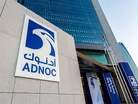How the UAE is Pioneering a Shift to Renewable Energies

The United Arab Emirates, spurred by its booming economy and escalating energy demand, is heavily investing in renewables.
The country's National Energy Strategy 2050 sets ambitious goals, including tripling renewable energy contributions and investing US$40bn to US$54bn by 2030 to address energy needs.
Working towards decarbonisation with ADNOC
The Abu Dhabi National Oil Company (ADNOC), fully owned by the Abu Dhabi Government and operational since 1971, is at the forefront of the energy sector's evolution.
By operating across the entire energy chain, ADNOC places itself among the global leaders for the lowest carbon intensity in the oil and gas industry. The company is on a mission to purify today’s energy sources while securing a sustainable future through investments in clean energy, earmarking an initial US$15bn for low-carbon solutions.
“Across ADNOC, we are developing and deploying innovative climate technologies and low carbon solutions to deliver on our accelerated decarbonisation plan and net zero by 2045 ambition,” says Musabbeh Al Kaabi, ADNOC Executive Director for Low Carbon Solutions and International Growth.
Revolutionising cooling with geothermal energy
A landmark partnership between ADNOC and the National Central Cooling Company PJSC (Tabreed) aims to rejuvenate Masdar City by integrating renewable geothermal energy for building cooling purposes.
This collaboration underpins the UAE National Energy Strategy 2050, thanks to ADNOC's US$15bn commitment.
Building cooling, a major power consumer in the UAE, is poised for transformation. Utilising wells that produce hot water more than 90 degrees Celsius and at flow rate of 100 litres per second, this hot water will now feed an absorption cooling system to produce chilled water.
This chilled supply will fulfil 10% of Masdar City’s cooling requirements through Tabreed’s network, marking a significant step towards energy efficiency and carbon footprint reduction.
"Geothermal heat is a clean and renewable source of energy abundantly available in the UAE and capable of providing baseload electricity,” explains Musabbeh.
“However, until now, it has remained an untapped source of energy. By leveraging technological advances, for the first time ADNOC and Tabreed have unlocked this clean energy source to decarbonise one of the most energy intensive sectors in the country.”
This geothermal and district cooling fusion not only offers a 50% improvement in energy efficiency over traditional methods but also propels the UAE towards its net zero by 2050 goal.
“The integration of geothermal energy with district cooling operations represents a significant advancement in the UAE's journey towards diversifying its energy mix and achieving net zero by 2050,” says Khalid Al Marzooqi, CEO of Tabreed.
“We are proud of our collaboration with ADNOC to accelerate our decarbonisation efforts in the leadup to COP28, which also underscores our commitment to exploring the latest technologies and harnessing the power of renewables to meet the rising demand for sustainable cooling.”
******
Receive the next edition of ClimateTech Magazine by signing up for its newsletter.
As part of this portfolio, make sure you check out Sustainability Magazine and also sign up to our global conference series - Sustainability LIVE.
Also check out our Sister Brand, Energy Digital.
******
ClimateTech Digital is a BizClik brand.
